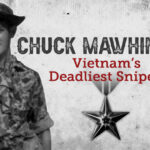
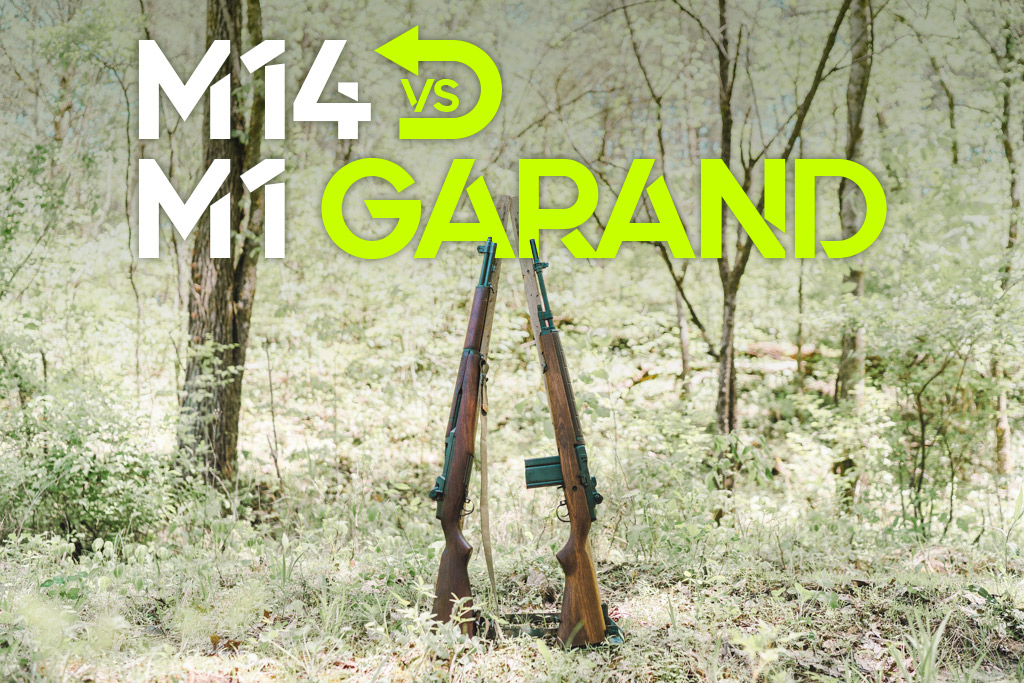
By Guy J. Sagi
So you want to buy a classic battle rifle? Fair enough. It’s something that most men desire to own in their lifetime. Sure, you could buy a Rolex, Leica camera, or some other luxury tchotchke. But there’s something about a linseed oil-rubbed woodgrain stock and parkerized stainless steel finish that excites you. It calls to you on some primal level. The only question is how do you decide between the M14 VS M1 Garand?
The M1 Garand served with distinction in both the Pacific and European theaters of World War II. Gen. George S. Patton called it, “The best battle implement ever devised.” This semi-automatic rifle accompanied our troops in the Korean War and claimed the U.S. Military’s small-arms throne until 1957, when the M14 took the kingdom.
Not everyone was happy with the decision, and opposing camps remain deeply entrenched on both sides of the M14 VS M1 Garand debate.
Ironically, the man who designed the heavy-hitting .30-’06 Springfield-chambered gun that American troops used on D-Day, Guadalcanal, and Inchon, also helped create its replacement. John Cantius Garand, eager to aid the war effort, refused a single cent in royalties for the roughly five and a half million M1s that bore his name. A post-war attempt in Congress to issue him $100,000 in gratitude failed. Although he was born north of the border, near Montreal, Canada, he was a patriotic American.
Garand Roots
Garand was born on New Year’s Day, 1888. Before he turned 11, his family had given up farming and moved to Connecticut, a region known for textile production. By 12, Garand was working in one of the factories nearby.
It didn’t take him long to understand the machinery and identify solutions to the inefficiency he witnessed. By the time he was 18, he held two patents – one for a bobbin machine that automatically wound and the other for a telescoping screw jack.
His engineering focus shifted to firearms, and his design submission to the Navy in 1918 caught the U.S. military’s attention. He began work at the Bureau of Standards at their request, but 18 months later, he started a new job at the famed Springfield Armory.
M1 Garand History
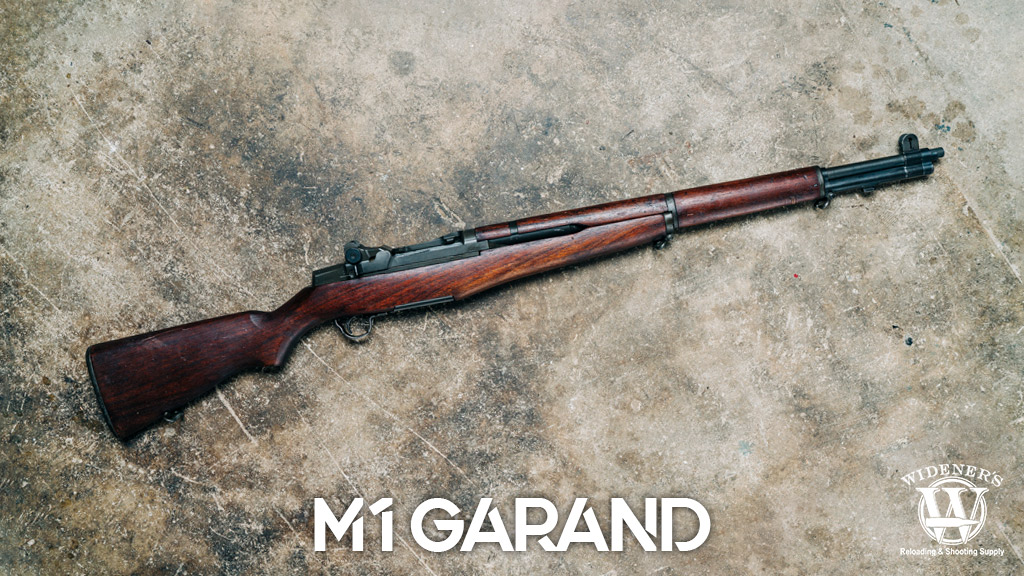
The M1 Garand battle rifle can be reloaded with stripper clips and holds 8 rounds of .30-06 in its internal magazine.
His first M1 prototype, the M1922, came out of that legendary facility in 1924. Testing began the following year at Fort Benning, where five different semi-automatic rifles hoped to replace the U.S. military’s venerable Springfield M1903 bolt action. Each came from a distinct company, but all chambered for the 7 mm cartridge officials hoped could reduce every soldier’s load. No winner emerged from the review, although the government requested Garand to create a .30-caliber version of his gun.
While evaluation continued, Garand’s gas-operated, semi-automatic firearm design received its patent on April 12, 1930. Then, in 1932, Army Chief of Staff Gen. Douglas MacArthur noted the large inventory of .30-’06 Sprg. ammunition the U.S. had on hand. He issued orders that the military would adopt no cartridge change in any new semi-automatic rifle.
The decision to use the M1 Garand as the standard issue rifle for the U.S. Army didn’t take long compared to modern delays. The announcement became public on January 9, 1936. There were several modifications during early production, including replacing the gas trap with a port on a few, improved sights, and others.
The U.S. Army fully fielded M1 Garands by the end of 1941. The Marines Corps and Navy followed, with Springfield Armory, Winchester, Harrington & Richardson, and even International Harvester manufacturing Garands during World War II.
M1 System Operation
A port on the M1 Garand traps a portion of the gas released with a shot and diverts it to a piston below the barrel that moves the operating rod back. It unlocks the bolt and ejects the spent casing along the way. Its spring, which compressed during that travel, moves the bolt forward, picking up a fresh cartridge, chambering it, and returning the gun into battery. The long-stroke gas-piston operation was an innovative approach for its day and is still used on various semi-automatic rifles.
The gun chambers .30-’06 Sprg. cartridges and has an internal, non-removable magazine with an eight-round capacity. The U.S. Military mandated using en-bloc clips to speed reloads in combat. The characteristic “ping” so familiar to gamers and war movie fans followed when it was out of ammo.
The M1 Garand was easy to field strip and served the U.S. with distinction for decades, but its reign ended in 1957. Variations of the gun are still used by other militaries in limited numbers and a few even saw action in Afghanistan and Iraq.
M14 History
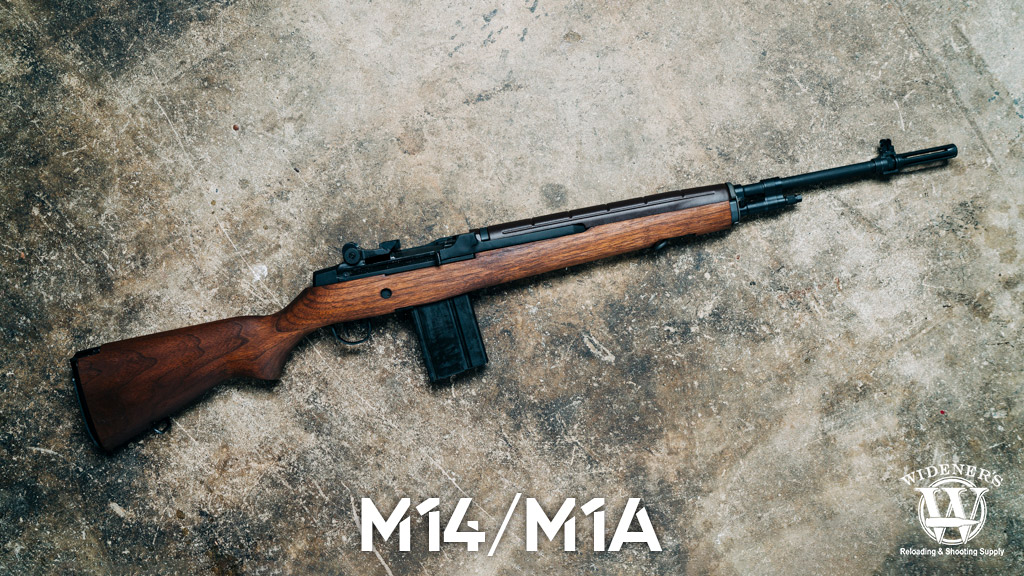
The M14/M1A battle rifle can be reloaded with 10 or 20-round detachable magazines filled with .308 Win ammunition.
The U.S. Armed Forces officially adopted the .308 Win. cartridge in 1954 – later modified into the slightly different 7.62 NATO. When that happened, the writing was on the wall. The M1 Garand’s time would soon end.
Springfield Armory’s engineers, including Garand before his 1953 retirement, were already exploring improvements to the M1 and its operating system. Enhancements included making it a short-stroke piston (still located under the barrel) and adding a bolt roller that theoretically reduced friction during firing. The new gun also had a straight op rod, a self-compensating gas system with a cut off, and detachable 20-round magazines, among other refinements.
It performed admirably compared to the others under consideration by the U.S. Military. With the .30-’06 Sprg. and .308 Win. so close in ballistic performance and the latter short-action ammo less hefty and bulky, it seemed like a sensible solution. Many commanders thought they’d found the ultimate battle rifle when they issued the first M14s in 1959.
Unfortunately, production delays and quality problems followed. By 1960 – three years after adoption – only members of the 101st fielded the rifle. The Fleet Marine Force followed the next year. The total number of service M14s manufactured comes to roughly 1.4 million.
The thick jungles of Vietnam, a conflict the U.S. was only entering, is one of the principal reasons for that small number. The gun’s heft and long length made it less than optimal in the thick cover and fast-moving engagements. In 1964, Secretary of Defense Robert McNamara ordered the M16 to replace the M14. The M16 is a shorter, nimbler platform that lives on today as the M4 and its variants.
In 1980 the last M14s were retired, many of them sentenced to armory life, practice use, and ceremonial display. As it turns out, the decision was mostly a wise one.
A Redemption Story
If classic battle rifles aren’t your thing, you’re probably wondering why anyone would want one over a modern battle rifle like the AR-10. Hold your horses for a moment and consider the following. Adopting the M16 and 5.56 NATO cartridge by the U.S. Military in 1969 led many to believe the M14 would become little more than a footnote in history. Just like you, they were wrong.
The short-barreled M4s that were so effective in Iraq’s house-to-house fighting showed their shortcomings when the Global War on Terror spilled into Afghanistan. Forward operating bases receiving fire often had little or no effective response to snipers at long distances. Hitting terrorists behind cover at greater than 200 yards with 5.56 rifles proved to be about as effective as throwing rocks.
Procuring more precision platforms wasn’t fiscally possible then, but the military found a clever solution thanks in part to the suggestion of its service members. The U.S. Military previously spent millions researching the development of National Match-grade M14s in the 1960s. A number of active duty veterans pointed out that the rifle displayed an ability to perform in the hands of marksmen well before its retirement.
Select M14s went back into service only after close inspection, fine-tuning, and the addition of modern optics and accessories. They found their way into the hands of skilled infantrymen, as well as some special operations teams, including several tank crews. Many of these issued rifles were further modified by their owners to meet critical demands for mission objectives. Their performance on the battlefield was sterling, leaving some to wonder why they were mothballed in the first place.
M14 VS M1 Garand: Specs

M14 VS M1 Garand: The M14/M1A (Top) has a higher capacity, but many prefer the simple operation of the M1 Garand (bottom).
| Rifle | In Service | Caliber | Effective Range | Capacity | Barrel Length | Overall Length | Weight Un/Loaded |
|---|---|---|---|---|---|---|---|
| M14/M1A | 1957-1964 | .308 Win | 500 Yards+ | 10/20 Round Magazines | 22″ | 44.3″ | 9.2/10.7 Lbs |
| M1 Garand | 1936-1957 | .30-06 | 500 Yards+ | 8-Round Clip | 24″ | 43.5″ | 9.5/11.6 Lbs |
At a glance, the M14 looks like a modern version of the M1 Garand. It still has all the charm of a classic battle rifle, but its upgraded features give it a contemporary flair. It weighs roughly 9.2 Lbs unloaded, while the M1 Garand tips the scales at 9.5. Their barrel lengths are 22 and 24 inches, respectively. Muzzle velocity is nearly identical—a byproduct of cartridge propellant improvement, as it turns out. The newer model was also about an inch longer, despite the shorter barrel.
In hand, the M1 Garand feels more balanced. It may be heavier, but the weight distribution is better. The detachable magazine of the M14 makes the rifle difficult to rest in any position other than its side. The peep sights on both rifles look the same, but something about the M1 Garand’s setup feels more natural when sighting a target. Both guns have a safety in the same position on the trigger guard. The trigger pull and reset on both rifles is similar, with the M14 having a slight edge in reset smoothness.
The rate of fire, however, is where the M14 shines. The limited number of fully automatic guns could deliver 700 to 750 rounds per minute. The vast majority, however, were semi-autos capable of slightly improved speed over the M1 Garand – which stood at 40 to 50. When firing both guns side-by-side, you’ll notice the M14 has a bit more muzzle rise. The M1 Garand has more felt recoil, it’s “kick” is harder. Follow-up shots become natural once you figure out each rifle’s cadence. So it comes down to which gun you’re most comfortable with operating.
Reloading Considerations
The M14’s detachable magazine with its 10 or 20-round capacity makes a world of difference in maintaining pace by speeding reloads. It also eliminates the “Garand thumb” that plagued rookies during World War II who didn’t know the clip-stuffing technique to prevent the bolt from slamming shut on a digit. You can load either rifle with stripper clips. The M14 allows empty magazines to be reloaded with stripper clips without first removing them from the rifle’s mag well.
I’ll say this: I don’t hate reloading the M1 Garand. There’s certainly an art to it. However, after a dozen or so stripper clip reloads, it starts to feel like a chore. The M14, in comparison, feels like reloading any other magazine-fed semi-auto rifle. If you’re planning on buying a rifle to do a lot of shooting, the M14 isn’t going to slow you down. Even if you’re reloading with stripper clips, you can still refill multiple magazines to have them on hand when you need them.
M14 VS M1 Garand: Ammo Do’s & Dont’s

Running the correct ammo in your battle rifle makes a big difference in accuracy, performance, and safety.
If you want your M1 Garand to last, don’t plan on loading it with modern .30-06 cartridges. Many manufacturers make M1-Garand-specific .30-06 loads with lower pressures that are safe to fire in classic rifles. If you don’t have another option, and you need to shoot modern .30-06 cartridges in your M1, be sure to swap out the factory gas plug for a more robust adjustable gas plug.
If you’re into reloading, you can easily find formulas online to create your own loads to feed your M1 safely. When you fire a post-war M1 Garand chambered in .308 Win, any commercial or military surplus ammo should be fine as long as it functions in the rifle correctly. Keep in mind that most classic M1s chambered in .308 Win are optimized for bullet grain weights in the 125-175gr range.
When it comes to the M14, or rather the M1A variant, if the rifle is chambered in .308 Win, you’re pretty much good to go. You shouldn’t have any issues with running modern .308 or 7.62×51 NATO cartridges. Depending on your rifle, magazines, and stripper clips, you will find that some ammo feeds and performs better than others. If you have a classic M14/ M1A variant chambered in 7.62 NATO, be aware that some modern .308 cartridges may not be safe to use in the rifle. When in doubt, RTFM, contact the manufacturer or consult with a licensed gunsmith before proceeding.
What About Ammo Pricing?
If you’re torn between the cost of ammo for the M14 VS M1 Garand, consider this. The .30-06 may be slightly more expensive, but the cartridge has been around for more than 100 years. True, you will have fewer available options to purchase, but the majority are high-quality cartridges that won’t disappoint you in performance. If you want to own an M1 Garand simply for the pleasure of shooting it, buying a hundred rounds of .30-06 isn’t a huge investment. If you’re only taking it out to the range a few times a year, you’ll be surprised how long it will last you.
For those considering an M14/M1A purchase, you already know .308 Win/7.62 NATO is cheaper to buy in bulk. Not only are surplus loads available but many military cartridges on the market were designed to run in a battle rifle. When it comes to .308 Win, the number of options is overwhelming. Your biggest challenge will be finding which loads run the best in your respective rifle. Once you have that squared away, you can stockpile while saving the rest of your money for magazines and weapons training.
M14 VS M1 Garand – Winner?
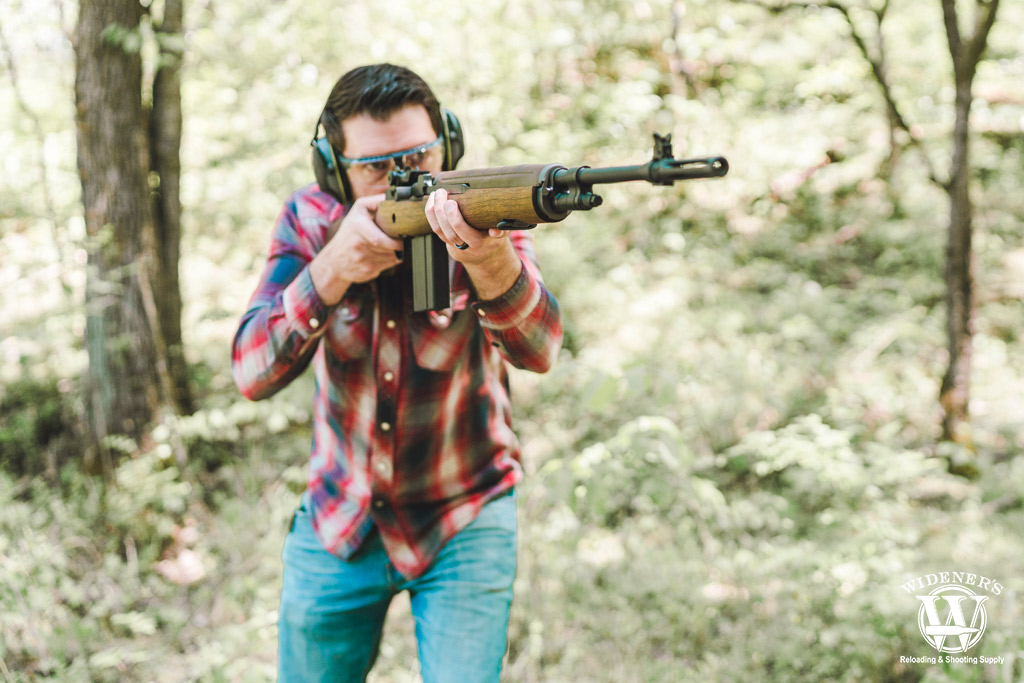
The M14/M1A platform offers the best of both worlds, its increased capacity, and ability to add optics, make it a winner in our book.
Modern sporting rifle fans will likely vote unanimously for the M14. It proved effective in the Sand Box and is modular enough for mission-specific configuration when fitted with the right stock. It’s also an easier platform to mount optics on, and the detachable magazines don’t feel dated. Its performance borders on legendary, and that gap in deployment adds to the mystique.
It is, however, hard to ignore what the M1 Garand did and is still capable of doing. Ballistics are nearly identical, as is the rate of fire when compared to the semi-auto version of the M14. An en-bloc clip limited to an eight-cartridge capacity might sway votes, but don’t let precision alter your opinion. The Marine Corps adopted M1C Garand variants as its sniper rifle in 1951, a position they held until the Vietnam Conflict. Those grunts know a little something about printing small groups at long distances, too.
If you’re after a true American classic, consider that nearly five-and-a-half million M1 Garands were produced. There’s no telling how many are currently treasured by collectors and enthusiasts. The M14 isn’t anywhere close to those production numbers, and procuring a true version as a citizen is basically unobtainium. The M1A variant however is still being produced and is readily available. By all accounts, it’s a modern classic, that gives you the best of both worlds if you’re itching for a battle rifle experience.
If you want a quality version of either rifle, prepare to pay a premium. The prices on M1 Garands with a battle provenance have skyrocketed in recent years. A good M1A variant will set you back around two grand. Be sure to budget for ammo and any needed accessories before making your dream purchase. Money can’t buy you happiness, but it can buy you a wood-grain battle rifle, which is basically the same thing.


